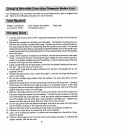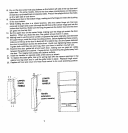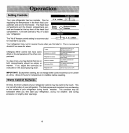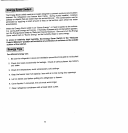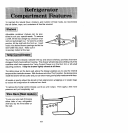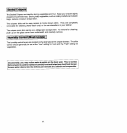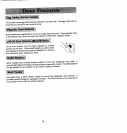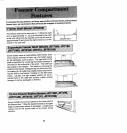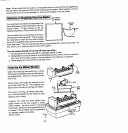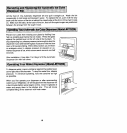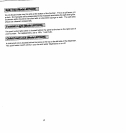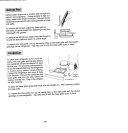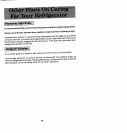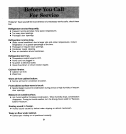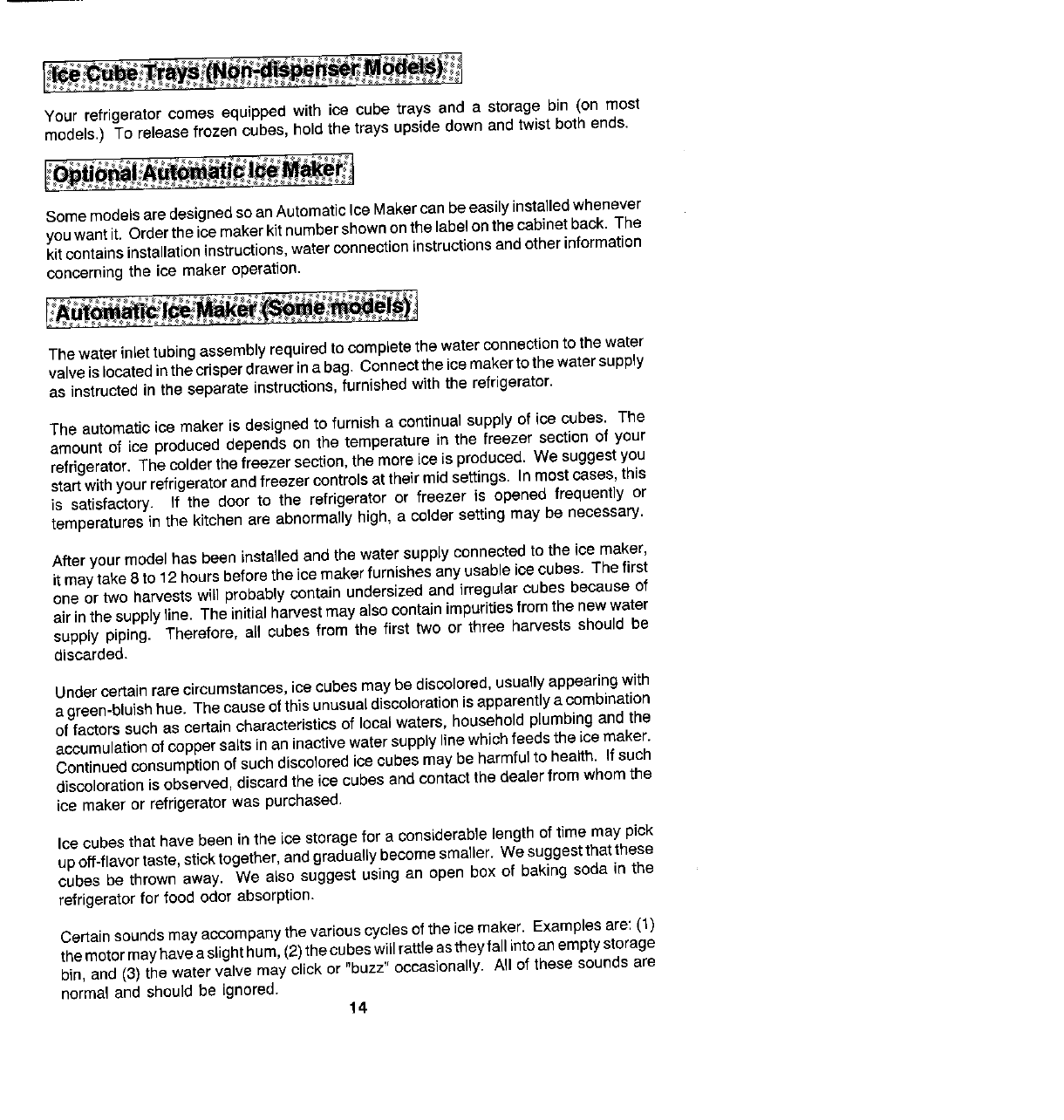
Your refrigerator comes equipped with ice cube trays and a storage bin (on most
models.) To release frozen cubes, hold the trays upside down and twist both ends.
Some models are designedso an Automatic (oeMakercan beeasily installedwhenever
you want it. Order the ice makerkit numbershown on the label onthe cabinet back. The
kit contains installation instructions,water connection instructions and other information
concerning the ice maker operation.
The water inlet tubing assembly requiredto complete the water connectionto the water
valve is located in the crisper drawer ina bag. Connect the icemaker to the water supply
as instructed in the separate Lnstructions,furnished with the refrigerator.
The automatic ice maker is designed to furnish a continual supply of ice cubes. The
amount of ice produced depends on the temperature in the freezer section of your
refrigerator. The colder the freezer section, the more ice is produced. We suggest you
start with your refrigerator and freezer controlsat their midsettings. In mostcases, this
is satisfactory. If the door to the refrigerator or freezer is opened frequently or
temperatures in the kitchen are abnormally high, a colder setting may be necessary.
After your model has been installed and the water supply connected to the ice maker,
it maytake 8 to 12 hours before the ice makerfurnishes any usable icecubes. The first
one or two harvests will probably contain undersized and irregular cubes because of
air in thesupply line. The initial harvestmay also contain impurities from the new water
supply piping. Therefore, all cubes from the first two or three harvests should be
discarded.
Under certain rare circumstances,ice cubesmay be discolored, usually appearing with
a green-bluish hue. The cause ofthis unusual discoloration is apparently acombination
of factors such as certain characteristics of local waters, household plumbing and the
accumulation of copper salts in an inactive water supply line which feeds the ice maker.
Continued consumption of such discolored ice cubes may be harmful to health. If such
discoloration is observed, discard the ice cubes and contact the dealer from whom the
ice maker or refdgerator was purchased.
Ice cubes that have been in the ice storage for a considerable length oftime may pick
up oft-flavor taste,stick together, and gradually become smaller. We suggest that these
cubes be thrown away. We also suggest using an open box of baking soda in the
refrigerator for food odor absorption.
Certainsounds mayaccompany the various cycles of theice maker. Examples are: (1)
the motormayhavea slighthum, (2)thecubeswill rattle asthey fall intoan emptystorage
bin, and (3) the water valve may click or "buzz" occasionally. All of these sounds are
normal and should be ignored.
14



